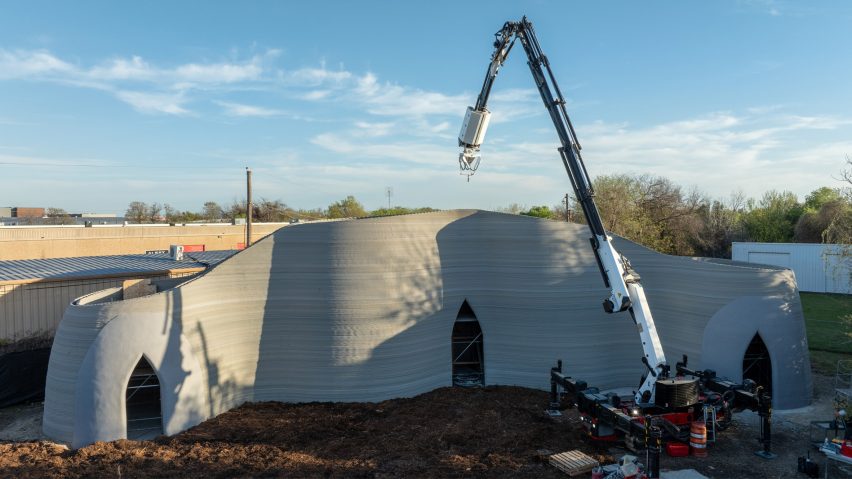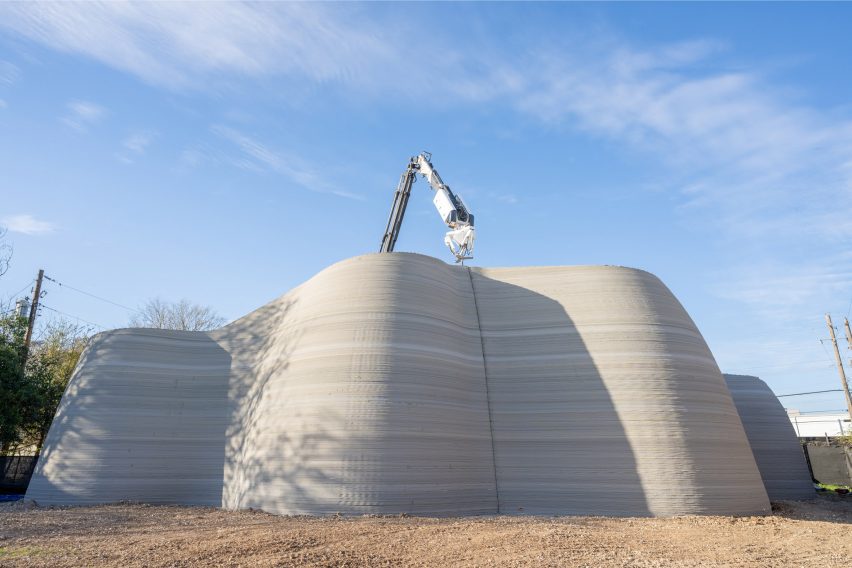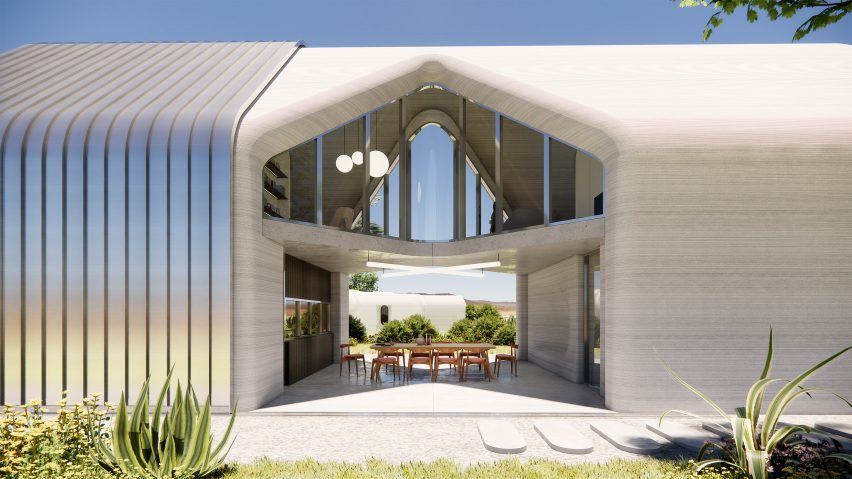
ICON develops 3D printer to build enclosed multi-storey structures
Texas-based ICON has unveiled Phoenix, a robotic-arm-mounted 3D printer that can create fully-enclosed, multi-storey structures from a low-carbon mixture, at SXSW.
ICON revealed the demountable crane-based 3D printer during a talk held as part of the annual SXSW festival in Austin,
Phoenix allows ICON to construct multi-storey houses with enclosed systems. It said that it is currently building a prototype outside its headquarters in Austin that will have a dome-like enclosed roof.

At 70 feet tall, the crane-like system allows for higher construction than ICON's current printer, the Vulcan, which has a gantry system with the chassis closer to the ground. According to the company, it can print structures up to 27 feet tall (8.2 metres).
ICON's proprietary cementitious admixture Lavacrete is distributed from the crane using a "highly integrated" system via a nozzle stabilised by gyroscopes.
Like other 3D-printing construction technologies, it lays layer upon layer of the mix, slowly creating walls that are supported by steel but do not need the extensive formwork – usually wooden – that characterises much concrete construction.
Because of the crane system, the machine can also build multiple structures in a single vicinity with only minor adjustments to the set up of the machine, and only a few people are required on-site to monitor the progress.
The advancement follows one made last year by technology firm Hannah on its multi-storey 3D-printed home, the first in the country.
ICON announces "lowest carbon residential building system"
In addition to the announcement of Phoenix, ICON also announced the development of a new material mixture as well as the integration of AI into its systems.
The material, called CarbonX is the "lowest carbon residential building system ready to be used at scale", according to the company. An MIT study published concurrently with the talk used the material to claim the benefits of 3D-printed construction for embodied carbon.
"The life cycle assessment results of the white paper show that the embodied and operational impacts of 3D-printed homes are lower than stick-framed construction," said ICON.

CarbonX will be not be used by ICON until after April 2024, and the company said that it will make it available for use by other firms.
Other announcements included Codex, a repository of "ready-to-print" designs that includes more than 60 designs, with three of the five collections created by Danish architecture studio BIG, with whom ICON has collaborated on a 3D-printed community with 100 homes in Texas.
ICON says the repository will continue to grow and be available for developers to select designs for residences.
The company also said that it is launching an AI program so that "anyone" can design 3D-printable home schemas through the ICON Vitruvius platform.
In addition to the 100-home community, ICON is also collaborating with BIG and hotelier Liz Lambert for the El Cosmico resort and homes in Marfa.
The imagery is courtesy of ICON.